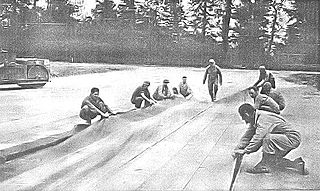| Szczepanów | |
|---|---|
| Village | |
| Country | |
| Voivodeship | Lower Silesian |
| County | Kamienna Góra |
| Gmina | Lubawka |
Szczepanów [ʂt͡ʂɛˈpanuf] (German : Tschöpsdorf) is a village in the administrative district of Gmina Lubawka, within Kamienna Góra County, Lower Silesian Voivodeship, in south-western Poland, near the border with the Czech Republic. [1]

German is a West Germanic language that is mainly spoken in Central Europe. It is the most widely spoken and official or co-official language in Germany, Austria, Switzerland, South Tyrol (Italy), the German-speaking Community of Belgium, and Liechtenstein. It is also one of the three official languages of Luxembourg and a co-official language in the Opole Voivodeship in Poland. The languages which are most similar to German are the other members of the West Germanic language branch: Afrikaans, Dutch, English, the Frisian languages, Low German/Low Saxon, Luxembourgish, and Yiddish. There are also strong similarities in vocabulary with Danish, Norwegian and Swedish, although those belong to the North Germanic group. German is the second most widely spoken Germanic language, after English.
Gmina Lubawka is an urban-rural gmina in Kamienna Góra County, Lower Silesian Voivodeship, in south-western Poland. Its seat is the town of Lubawka, which lies approximately 14 kilometres (9 mi) south of Kamienna Góra, and 87 kilometres (54 mi) south-west of the regional capital Wrocław.

Kamienna Góra County is a unit of territorial administration and local government (powiat) in Lower Silesian Voivodeship, south-western Poland. It came into being on January 1, 1999, as a result of the Polish local government reforms passed in 1998. The county covers an area of 396.1 square kilometres (152.9 sq mi). Its administrative seat is the town of Kamienna Góra; the only other town in the county is Lubawka.





